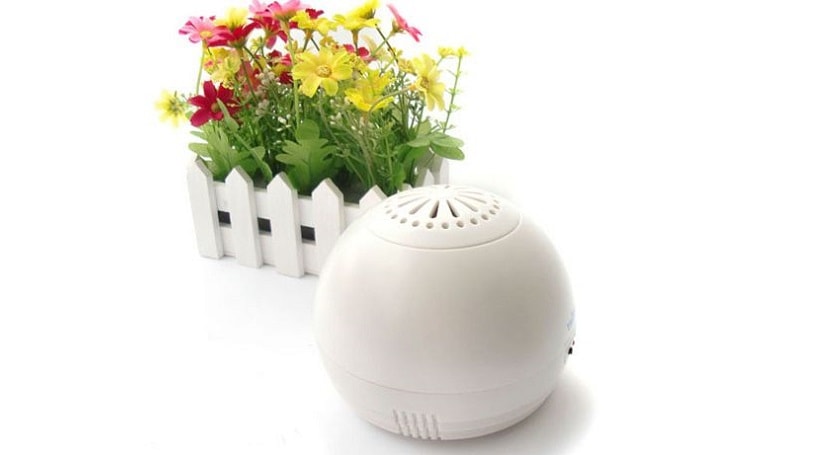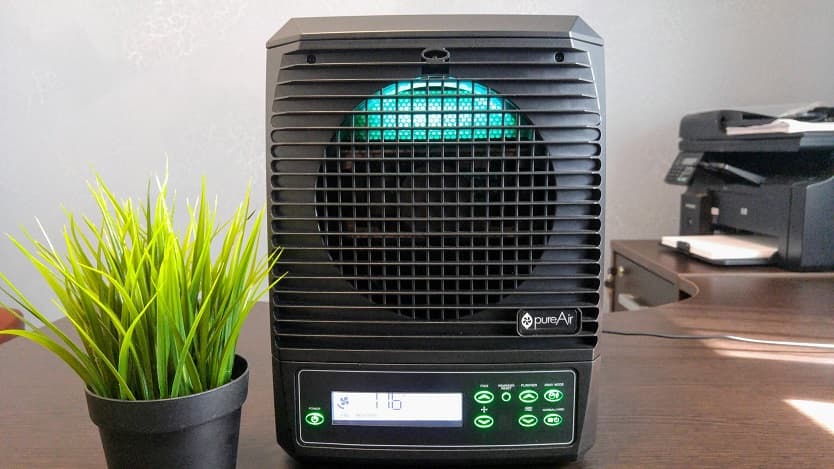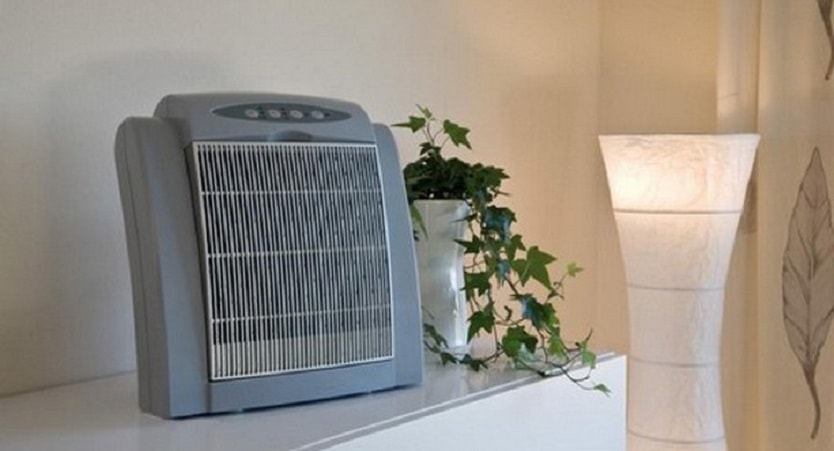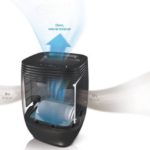You've probably noticed how easy and pleasant it is to breathe in the mountains, in a coniferous forest, near the sea or a waterfall. The reason is the high concentration of negatively charged particles - ions of natural origin. At the same time, in poorly ventilated rooms, with a large number of functioning office equipment and household appliances, efficiency drops sharply over time. The reason is the excess in the air of positively charged particles - cations. Installing an ionizer will optimize the ratio of negatively and positively charged particles in the room.
Why is the ionizer useful?

The presence of a large number of negative ions can significantly improve the processes of gas exchange in the human lungs. This causes an improvement in metabolism and strengthens the immune system, accelerates tissue regeneration (wounds heal faster), improves sleep, the condition of the skin and, in general, a person's well-being. But the main effect is associated with the respiratory system - the risk of SARS and asthma, as well as the manifestation of allergic reactions, decreases.
![]() See also - Rating of home air purifiers and humidifiers
See also - Rating of home air purifiers and humidifiers
How an ionizer works

Regardless of the design, the very principle of operation of the ionizer remains the same - it is based on a corona discharge. A high voltage with a negative charge is applied to an electrode with a large surface curvature (for example, a plate with needle-like pins). A corona discharge occurs at the tip of the electrodes, resulting in the formation of ions. The resulting stream of ions flowing down from the electrode spreads throughout the room. In this case, the particles of pollution and dust particles contained in the air, being charged, settle on the plates of the ionizer. As a result, purified ionized air comes out of the device.
![]() See also - Making a humidifier with your own hands
See also - Making a humidifier with your own hands
Varieties of ionizers

Some models of air ionizers may contain additional functions. For example, an ionizer-purifier has a built-in filter that cleans the air - this combination can significantly improve the quality of indoor air. If the room is very dusty, then it is worth purchasing a device with a built-in HEPA filter. If the level of dustiness is relatively low and you want to save money on replacing the filter, then you should opt for ionizers with an electrostatic filter. It is reusable, easy to clean and has good air filtration performance.
Another example is an ionizer-humidifier, such a device will provide an ideal microclimate in the room. Such a combination of devices will save space, which is very important for an apartment, while maintaining the quality of work. The humidifier itself can be of very different types - air washer, ultrasonic, etc.
However, there are monofunctional air ionizers that are optimized for specific conditions.For example, an air ionizer for a car that is powered by a cigarette lighter is recommended for drivers who spend a lot of time behind the wheel. Another model is suitable for those who work at a computer for a long time, which is a rather powerful source of positively charged particles. To neutralize their effect and increase the concentration of ions, you can use a small USB air ionizer. It is very compact, comparable in size to a USB storage device, the so-called flash drive, and is powered by a standard USB port.
Another type of ionizer is a salt lamp. It is a low-power incandescent lamp on which a layer of natural salt crystals is applied. When heated, the salt begins to emit negatively charged ions. It can be a ball-shaped lamp or a lamp set in rough stone. Despite the decorative appeal, such salt ionizers have one significant drawback - low power and, as a result, create a low concentration of ions.
Important:
The most famous ionizer is the Chizhevsky lamp, but you should not buy it for a house / apartment. After all, this is a medical device, not a household device; its use should be strictly dosed.
![]() See also - The benefits and harms of household air humidifiers
See also - The benefits and harms of household air humidifiers
How to choose an air ionizer for an apartment

![]() See also - DIY air humidifier care and cleaning
See also - DIY air humidifier care and cleaning
First of all, before choosing an air ionizer for an apartment, you should take into account that its use has a number of limitations. First of all, doctors do not recommend installing it in rooms where a child is not yet one year old. In addition, the installation of ionizers for people with cancer is contraindicated - as mentioned above, ions improve metabolism, which can cause accelerated growth and reproduction of cancer cells. Some people have an individual intolerance to aerons.
Before proceeding to the assessment of the basic parameters of the ionizer, one should deal with one rather widespread misconception: an ionizer cannot replace a humidifier. Just like an air humidifier, it performs completely different functions than an air ionizer, maintaining an optimal level of humidity.
Bipolar or unipolar
Depending on the type of ions produced, ionizers are bipolar (produce positive - cations and negative - anions) and unipolar (generate only anions). There is no consensus among experts as to how justified the choice of a bipolar ionizer is. It is believed that the natural, most harmonious ratio of negative and positive ions in the air should be 3: 2. But at the same time, a large number of household appliances are a source of a large number of positively charged particles. Therefore, it is optimal to choose a unipolar ionizer for office premises; moreover, it is much cheaper. But for a children's room with a minimum of household appliances, a bipolar ionizer is better suited, even despite the fact that such models are quite expensive.
Performance
It can be specified in two versions. The first one is the created concentration of ions per cubic meter of the room, the optimal value is from 10 thousand to 20 thousand ions per cubic centimeter. The second option - the area for which the ionizer is designed is indicated, while the performance is calculated for rooms with a ceiling height of 2.5 meters.
Emitter voltage
It should be between 20 kV and 30 kV. A reading below the recommended level cannot provide continuous ion production. Voltage over 30 kV is not recommended for electrical safety. In addition, at such a voltage, active generation of ozone begins, whose high concentration can be dangerous.
Noise level
Depends on which ion propagation method is used.When active, a fan is used, which becomes a source of noise; when passive, ions spread independently. Passive air ionizers are quieter and cheaper, but they have a significant drawback - the uneven distribution of ions throughout the room. A negatively charged particle is unstable; it tends to recombine by attaching a positively charged particle. Therefore, in the immediate vicinity of the ionizer, the concentration of ions will be high, but in the far corners of the room (especially if it is large) they may simply not "get". An air ionizer with a built-in fan has a higher noise level, but at the same time provides a more even distribution of ions throughout the entire volume of the room.
See also:


